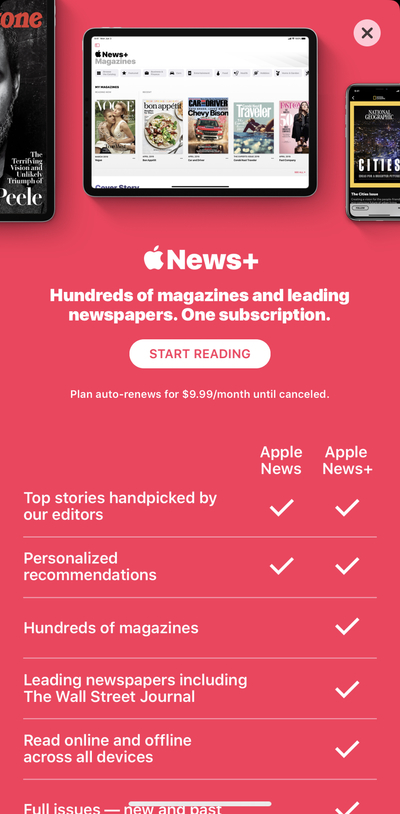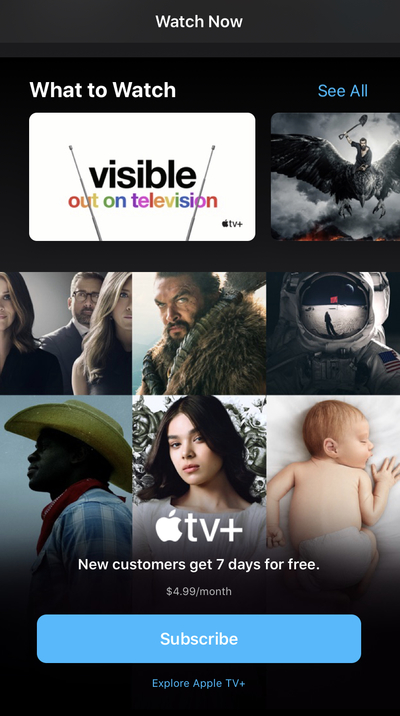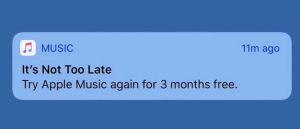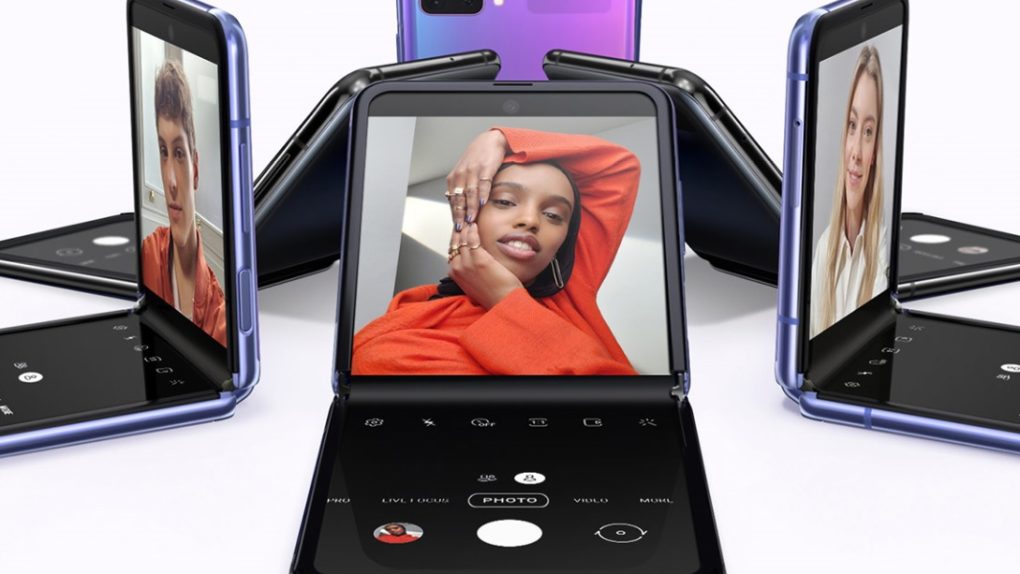In a blog post that has attracted a pretty sizable amount of attention today, Tumblr software engineer Steve Streza called out Apple pretty harshly for what he sees as the iPhone maker shoving way too many ads in its users’ faces. Those ads generally market new Apple services and subscriptions like
Taken as a whole, Streza writes, Apple’s services business raked in $12.7 billion in Q1 2020, almost a sixth of Apple’s overall revenue for the quarter. “All that money comes from the wallets of 480 million subscribers, and their goal is to grow that number to 600 million this year,” Streza’s post reads. “But to do that, Apple has resorted to insidious tactics to get those people: Ads. Lots and lots of ads, on devices that you pay for.” Here are examples of the kind of thing he’s talking about.
If you open the Apple News app for the first time, you may be greeted with a full-screen display that looks like this before you ever dive into the aggregated news content this app serves up:

The app has a free tier, as well as a $9.99/month subscription offering. That’s what Apple hits you up to pay for straight away, and with little reminders here and there as you go about using the free tier.
Here’s another example. Apple’s TV app is where you go to watch episodes of TV shows you’ve rented or bought, as well as movies. It’s also your entry point into Apple’s still relatively new subscription TV offering,

I don’t know about you, but I don’t mind Apple advertising me a paid tier of a product whose app I’ve just opened up. I believe I may also have seen a bit of cross-pollination, such as
Again, I can’t sympathize with the latter half of that sentence, because I adjust the default push notifications for each app on my phone. If you don’t do that, and I know most of you don’t, why would you then complain about getting too many push notifications? Makes no sense! (In my best Larry David-as-Bernie Sanders voice.)
One example Streza uses is Apple Music, which he seems to have gotten this notification for after unsubscribing:

“If you subscribe and then cancel, Apple sends invasive push notifications asking you to re-subscribe,” he writes. “These are on by default without a permission request. This is, of course, against the rules they lay out for other developers” which he then includes a portion of:
Push Notifications must not be required for the app to function, and should not be used for advertising, promotions, or direct marketing purposes or to send sensitive personal or confidential information.
He theorizes that one reason these practices from Apple aren’t talked about as much is that Apple loyalists likely subscribe to some or all of these services, eliminating the need for those people to be advertised to. Still, he concludes, “it’s time for the tech community to recognize that Apple is no longer designing their products for a great experience, but as upsells to get you into the paywalled garden.”
Ok, but why then aren’t we including Samsung in this discussion?
Behold, one of the most annoying places imaginable to include personalized ads on a smartphone:
I’m sorry, but you can’t convince me that that isn’t worse than the ads above that Apple is showing. It’s the difference between paying almost $1,400 for a phone and getting shown ads for things you might be interested in every time you dial a number to call, compared to opening a free app and being shown an ad for that app when you’re already inside it. Thankfully, these ads on Samsung phones which are tied to its Places tab can be disabled.
If I’m already in an app, I’ve made a conscious decision to open it. That’s a point at which I can be reasonably okay with a nudge to pay for it. Samsung’s approach is the equivalent of forcing me to sit through the ads that run before you even get to the trailers before your feature film in a cinema these days. Nobody likes those. A captive audience is not the same thing as a receptive one.








